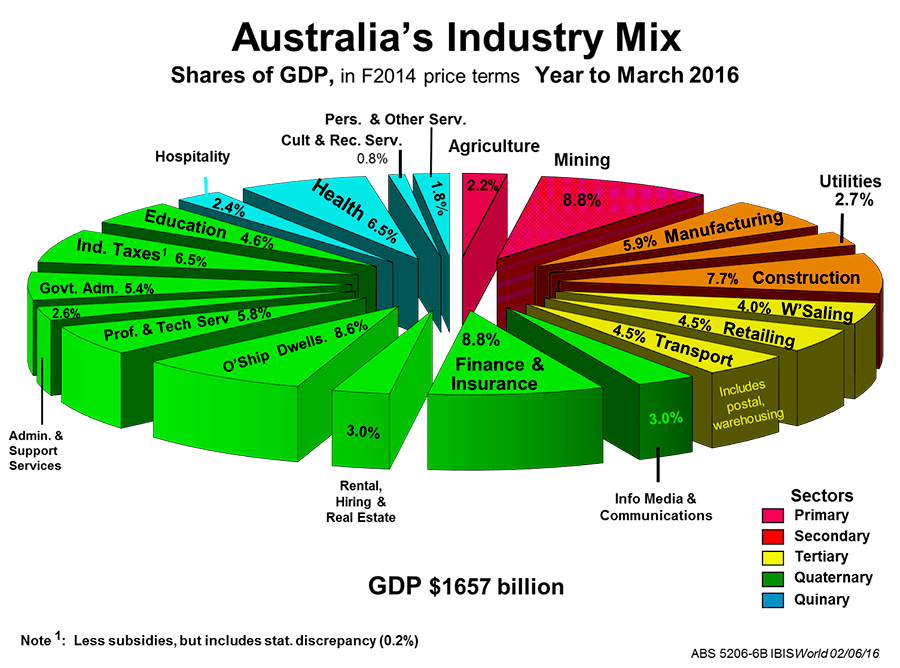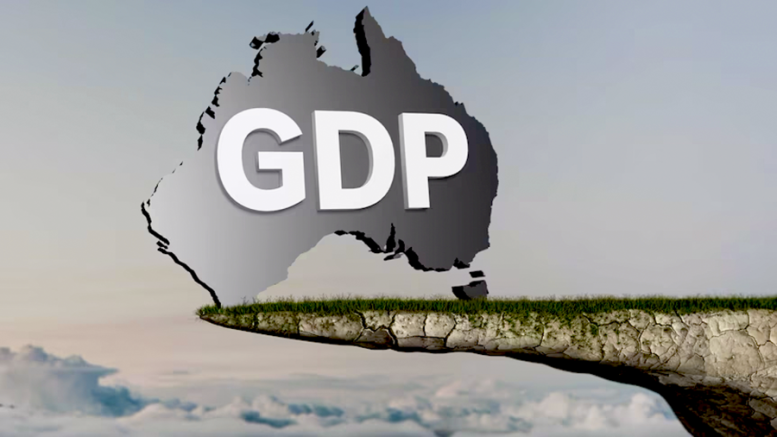Contributed by Joe Montero
The national accounts figures released yesterday paint a bleak picture of where Australia is heading. Released by the Australian Burau of Statistics (ABS), they suggest a declining Australian economy. Official Gross Domestic Product (GDO) growth for the last quarter was a mere 0.2 percent. The reality is even worse.
Australia measures GDP the contribution made by labour and capital to create value. The problem is howe to define these asserted contributions. This starts with the definition of value, and the way this is achieved is to measure sales. This includes the transfer of assets which doesn’t add new value to the economy.
Take the rising bubble of the real estate market for example. This is counted in as a contributor to GDP. So all sorts of financial transactions in part, if they relate to final consumption, and more importantly, to the transfer of assets. The transfer of assets doesn’t create new value. Depreciation of equipment in enterprises, which is a tax offset, is included as a contribution to GDP.

Australia’s property bubble isn’t really economic growth
There are also exclusions such as products used in production, subsidies from government, and imports in the main. But they still aren’t enough to reflect the reality.
How many more times do we need to be reminded that an alternative approach is needed to fix the economy?
In Australia’s case, GDP is boosted by fossil fuel and mineral exports, which has little connection with what the rest of the economy is doing.
Such a package means that the GDP calculate is going to be an over estimation of performance. This means that the real economic growth of Australia for the last quarter was less than the miserable 0.2 percent announced.
Add in a population growth of 0.7 percent over the same period, and the per capita growth, this is the amount per person has gone down. This explains why people are finding that they are worse off. Other data in the National Accounts backs this.
Wages are set to have jumped 2.6 percent. But this is in terms of dollars, not what they can buy, or what is called the real wage. This has been taken away and more by inflation and government takes away part through taxation. Real wages dropped. Disposable income rose by a mere 0.1 percent, and this doesn’t discount what was paid for on credit. Real disposable income slumped by 1.7 percent.
On top of this, the household savings rate dropped 1.1 percent. Australians are neither spending nor saving, which means they have less. The data is conclusive. Australia became worse off. But the most worrying part is that this isn’t a once off. The data is following a longer term trend.
Th e graph below Shows the long-term downward trend in real GDP.

Source: ABS Australian National Accounts: Income, Expenditure and Product, and Treasury
Some commentators have mistakenly blamed it all on interest rates. Although they do impose a big burden in today’s circumstances, they remain historically low. The problem is that Australians are much closer to the margin, and that even the smallest rise hurts. The real issue is what’s brought so many so close to the margin?
We must look elsewhere. To the nature of the economy. This can’t be repeated too many times. The economy is failing to create enough real value. What does this mean? It means there is far too much reliance on paper transactions and not nearly enough on creating tangible products.
The pie chart below shows the dependence of the economy on financial transactions and to and related services. This involves most of the green and extends to the other colours. The pie chart also shows that the production of good and their consumption are now only small parts of the economy.

Secondly, Australians don’t have sufficient capacity to aces what Australia produces. That is, the gap between the cost of living and the income of most is widening.
Thirdly, government policy to address the first two problems is missing. Instead of this there is a continuing clinging onto failed old policies favouring corporate investors instead of people and the real economy. The failure is the insistence on a corporate investor led economy, and an inability to recognise that it is this that is preventing success.
Australia still lacks a national plan for comprehensive development. This needs a targeted reboot of manufacturing, taking advantage of new technologies and opportunities to move towards a clean, sustainable economy, with the growth of new products bringing new value. This needs the harnessing of out of control fiancé and applying it to real needs. This requires investment in infrastructure for the new economy, non-carbon energy production and delivery, transport systems, internet capacity, education and training, and other vital needs.
All the above also depends on a far more equal distribution of income. This will allow all to participate in the economy to the best advantage. The best ways to facilitate this is through a taxation system that eliminates the massive tax evasion at the top end and based on the principle of contribution according to capacity, to provide quality public services and public investment towards an economy for people.
This includes a major investment in affordable housing, all pensions and income for the unemployed, and health services, which would do a lot to boost discretionary spending on all other needs and be good for the economy.


Be the first to comment on "The latest national accounts data shows ongoing failure to properly deal with a sick economy"